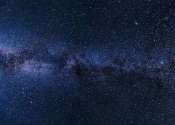The galaxy cluster Abell 959
Most galaxies lie in clusters containing from a few to thousands of objects. Our Milky Way, for example, belongs to the Local Group, a cluster of about fifty galaxies whose other large member is the Andromeda galaxy about ...









